Related Research Articles
In addition to its classical and literary form, Malay had various regional dialects established after the rise of the Srivijaya empire in Sumatra, Indonesia. Also, Malay spread through interethnic contact and trade across the south East Asia Archipelago as far as the Philippines. That contact resulted in a lingua franca that was called Bazaar Malay or low Malay and in Malay Melayu Pasar. It is generally believed that Bazaar Malay was a pidgin, influenced by contact among Malay, Hokkien, Portuguese, and Dutch traders.
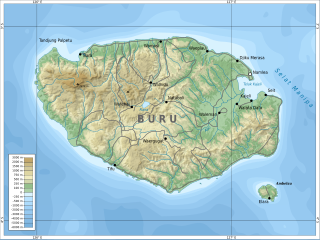
Buru is the third largest island within the Maluku Islands of Indonesia. It lies between the Banda Sea to the south and Seram Sea to the north, west of Ambon and Seram islands. The island belongs to Maluku province and includes the Buru and South Buru regencies. Their administrative centers, Namlea and Namrole, respectively, have ports and are the largest towns of the island, served by Namlea Airport and Namrole Airport respectively.
The Central–Eastern Malayo-Polynesian (CEMP) languages form a proposed branch of the Malayo-Polynesian languages consisting of over 700 languages.
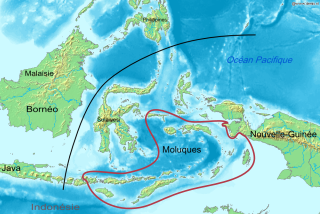
The Central Malayo-Polynesian languages (CMP) are a proposed branch in the Malayo-Polynesian subgroup of the Austronesian language family. The languages are spoken in the Lesser Sunda and Maluku Islands of the Banda Sea, in an area corresponding closely to the Indonesian provinces of East Nusa Tenggara and Maluku and the nation of East Timor, but with the Bima language extending to the eastern half of Sumbawa Island in the province of West Nusa Tenggara and the Sula languages of the Sula archipelago in the southwest corner of the province of North Maluku. The principal islands in this region are Sumbawa, Sumba, Flores, Timor, Buru, and Seram. The numerically most important languages are Bima, Manggarai of western Flores, Uab Meto of West Timor, and Tetum, the national language of East Timor.

The Sama–Bajaw languages are a well-established group of languages spoken by the Sama-Bajau peoples of the Philippines, Indonesia and Malaysia.
The Central Maluku languages are a proposed subgroup of the Central–Eastern Malayo-Polynesian branch of the Austronesian language family which comprises around fifty languages spoken principally on the Seram, Buru, Ambon, Kei, and the Sula Islands. None of the languages have as many as fifty thousand speakers, and several are extinct.
The Buru–Sula languages are a group of Austronesian languages spoken on the Buru and Sula Islands in the eastern Moluccas. Buru itself has almost forty thousand speakers, and Sula about twenty thousand.
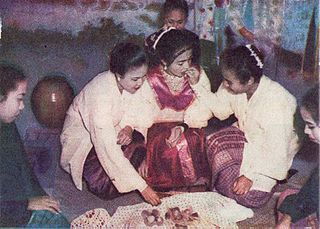
Moluccans are the Austronesian-speaking and Papuan-speaking ethnic groups indigenous to the Maluku Islands, Eastern Indonesia. The region was historically known as the Spice Islands, and today consists of two Indonesian provinces of Maluku and North Maluku. As such, "Moluccans" is used as a blanket term for the various ethnic and linguistic groups native to the islands.
Kei is an Austronesian language spoken in a small region of the Moluccas, a province of Indonesia.
Ternate is a language of northern Maluku, eastern Indonesia. It is spoken by the Ternate people, who inhabit the island of Ternate, as well as many other areas of the archipelago. It is the dominant indigenous language of North Maluku, historically important as a regional lingua franca. A North Halmahera language, it is unlike most languages of Indonesia which belong to the Austronesian language family.
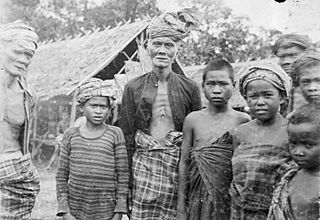
Buru people is an ethnic group mostly living on Indonesian island Buru, as well as on some other Maluku Islands. They also call themselves Gebfuka or Gebemliar, which literally means "people of the world" or "people of the land". Buru people are related to the eastern Indonesian anthropological group and from an ethnographic point of view are similar to other indigenous peoples of the island Buru. They speak the Buru language.

Lisela or Rana people is an ethnic group mostly living on Indonesian island Buru, as well as on some other Maluku Islands. They belong to the eastern Indonesian anthropological group and are sometimes referred to as northern Buru people. From an ethnographic point of view, Lisela are similar to other indigenous peoples of Buru island. They speak the Lisela language.
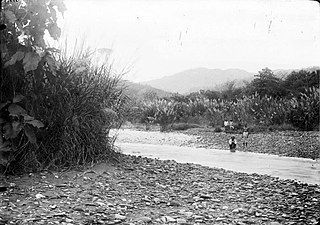
Kayeli people is an ethnic group mainly living on the southern coast of the Kayeli Gulf of Indonesian island Buru, mainly from the Kaiely Gulf. From an ethnographic point of view, Kayeli are close to other indigenous people of Buru, such as Lisela and Buru.
The Ambelau people are an ethnic group who form the majority of the population of the Indonesian island of Ambalau. They also live on nearby island Buru and other islands. By ethnography, Ambelau are close to most indigenous peoples of Buru island. They number about 8,260, and speak the Ambelau language.
Ambelau is an Austronesian language; in 1989, it was spoken by about 5,700 Ambelau people, of whom more than 5,000 lived on the Indonesian island Ambelau and most others in the village Wae Tawa of the nearby island Buru.
Buru or Buruese is a Malayo-Polynesian language of the Central Maluku branch. In 1991 it was spoken by approximately 45,000 Buru people who live on the Indonesian island of Buru. It is also preserved in the Buru communities on Ambon and some other Maluku Islands, as well as in the Indonesian capital Jakarta and in the Netherlands.
Kayeli is an extinct Austronesian language once used by the Kayeli people of the Indonesian island Buru. Two dialects were recognized, namely Leliali (Liliali) and Lumaete.

Ambelau or Ambalau is a volcanic island in the Banda Sea within Maluku Islands of Indonesia. The island forms an administrative district which is part of the South Buru Regency of Maluku province, Indonesia. It has a land area of 201.7 km2, and had a population of 6,846 at the 2010 Census; the official estimate as at mid 2022 was 9,170. The administrative center is Wailua, a settlement located at the south of the island. About half of the island's population is composed of indigenous Ambelau people who speak the Ambelau language; the other half are mostly immigrants from the nearby Maluku Islands and Java.
Taliabo (Taliabu) is a Malayo-Polynesian language spoken on the island of the same name in the Moluccas of Indonesia.
Bacan Malay or Bacan is a Malayic language spoken on the island of Bacan in North Maluku province, Indonesia, by the minor Bacan ethnic group. It is an anomalous presence in the region, being surrounded by genetically distant Austronesian languages and languages of the unrelated North Halmahera family. Bacan is geographically removed from the Malay heartlands in the western archipelago.
References
- ↑ Lisela at Ethnologue (18th ed., 2015) (subscription required)
- 1 2 Dutton, Thomas Edward; Tryon, Darrell T., eds. (1994). Language Contact and Change in the Austronesian World. Berlin: Walter de Gruyter. p. 261. ISBN 3-11-012786-5.
- 1 2 3 Ethnologue: Languages of the World. "Lisela: A language of Indonesia (Maluku)".
- 1 2 "Buru Island 6 Tribes". Archived from the original on 2010-10-11.
- ↑ Grimes, Barbara Dix (2006). "Mapping Buru: The Politics of Territory and Settlement on an Eastern Indonesian Island" (PDF). In Reuter, Thomas (ed.). Sharing the Earth, Dividing the Land: Land and territory in the Austronesian world. Comparative Austronesian Series. Canberra: ANU Press. doi: 10.22459/sedl.10.2006.06 . ISBN 9781920942694.
- ↑ "Languages of Indonesia (Maluku)". Ethnologue. Archived from the original on 2010-10-22.
- ↑ "Publications by Barbara Dix Grimes". SIL International.
- ↑ "Publications by Charles E. Grimes". SIL International.
- ↑ "Chuck & Barbara Grimes, Wycliffe Bible Translators". Bethel Grove Bible Church. Archived from the original on 2010-10-19.